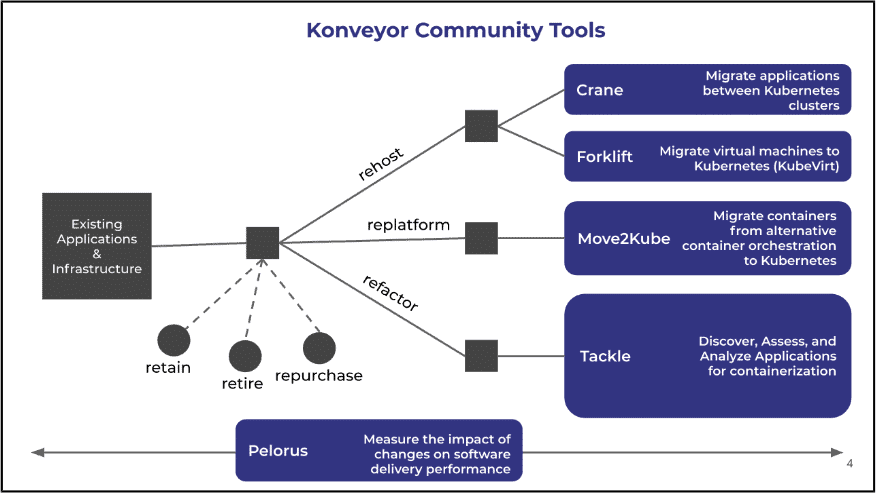Red Hat and IBM Research have released the Konveyor Project during Kubecon 2021. It consists of a series of tools that allow users to migrate their application to a Kubernetes environment.
Konveyor consists of five open-source tools called Crane, Forklift, Move2Kube, Tackle and Pelorus. Together, the tools offer a complete toolbox of possibilities for making existing applications ready for Kubernetes.

Crane
If you already have a containerised application running in Kubernetes but want to move it to another Kubernetes cluster, you can use Crane. The tool can also be used when, for example, the user wants to upgrade from an older to a newer version of Kubernetes or, for any reason, wants to empty a cluster.
Forklift
Red Hat says that many Kubernetes users feel the need to migrate their virtual machines to Kubernetes without modification. To do this, users can use virtualisation software KubeVirt. To migrate existing VMs to that software, Red Hat has now released Forklift. The company claims that this form of migration is less advantageous than replatforming or refactoring, but should still offer a solution in cases where developers do not have the possibility of modifying the existing code.
Move2Kube
Kubernetes is by far the most popular container orchestration platform, but alternatives are also available. Users who want to move from one of those alternatives to Kubernetes now have it a little easier. With Move2Kube, existing applications are converted so that they can be used in Kubernetes.
Tackle
For applications that have not yet been made suitable to work in container environments, Red Hat has built the software Tackle, intended for refactoring. This is the process of rebuilding the application architecture to work in cloud-native environments. Tackle provides some tools to analyse what it takes to get an application working in a container.
Pelorus
Once the migration to Kubernetes is successful, users can then analyse the results with Pelorus. Pelorus measures data such as delivery performance, lead time, deployment frequency, the average time taken to recover and how often the migration goes wrong. This tool was created because the community needed to measure the impact of rehosting, replatforming, refactoring and change.
Konveyor is available immediately.
